- Home
- Featured
Featured

For the past month, as fires rage in Indonesia, more greenhouse gases entered the atmosphere than produced by the entire US economy during that time, reports the World Resources Institute. That’s a startling fact. The fires are an annual event as companies illegally clear more of Indonesia’s precious rainforests for palm oil plantations and drain peatlands for pulp and paper production. Accounting for 85% of the country’s greenhouse gases, this year fires could catapult Indonesia to the world’s biggest emitter, from #5 now. 2015 could be the worst yet with about 95,000 fires so far, according to the Global Fire Emissions Database. Even worse, much of what’s on fire are peatlands, which hold some of the most concentrated carbon stores on Earth. Methane is also released. And this is in some of the most biodiverse areas left in the world. Widespread fires cause hazardous air conditions – choking haze – over much of Southeast Asia, affecting millions of people, and sending 500,000 for medical treatment this year. "As governments prepare to meet in Paris to save the world from catastrophic warming, the earth in Indonesia is already on fire," says Bustar Maitar, Indonesian Forest Project Leader for Greenpeace Southeast Asia. […]
Read More
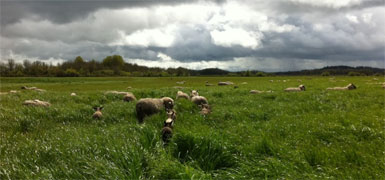
This innovative company, Farmland LP, is open to accredited investors who want returns from expanding organic acreage in the US (but obviously, do your due diligence). Organic farming is crucial for peoples’ health, biodiversity (such as supporting pollinators), and to reverse climate change. Demand for organic food keeps growing in the US, but acreage is way behind, forcing organic farmers to import many ingredients. by Linda Richards The challenge is clear and only intensifying with the rising demand for organic products: more organic farmers and more organic land are needed. At the same time, older farmers are selling farmland, fueling a farmland real estate market that continues to grow. Investors have averaged returns of 12% over the last 20 years, according to the National Council of Real Estate Investment Fiduciaries. A company called Farmland LP is using these market dynamics to offer a creative solution. Launched in 2009 and based in San Francisco, it owns over 7000 acres of farmland in California and Oregon. More than 1000 acres of that are certified organic, with the rest in transition. The farms are professionally managed by Farmland LP, while 20 tenant farmers and ranchers lease cropland, livestock forage and on-farm facilities. One […]
Read More
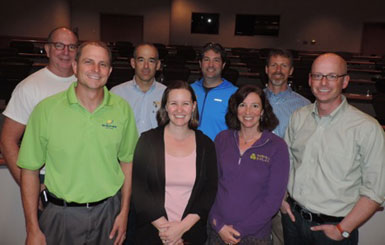
by Amanda Bybee One day in late 2013, Blake Jones was feeling disillusioned. As a cofounder of Namaste Solar in Boulder, Colorado, he was well versed in the world of solar finance. He couldn’t, however, seem to find a financing option that was both aligned with his company’s values AND that offered competitive terms in the solar market. And so he began researching the possibility of simply opening a financial institution himself. After looking into starting a loan fund or a bank, he became very excited about the credit union model. Credit unions are democratically owned, nonprofit financial cooperatives that serve an identified community. They provide a vehicle for members of that community to pool their money and then use it to make loans to other members. The appeal of the cooperative structure was strong – having started two other coops, he could personally attest to the merits of the model. "Namaste Solar became an employee-owned coop in 2011, and it has been very successful for us. We believe that having an ownership stake in the company results in our employee-owners being uniquely motivated to provide great customer service and workmanship," he explains. "Similarly, when we cofounded the Amicus Solar […]
Read More
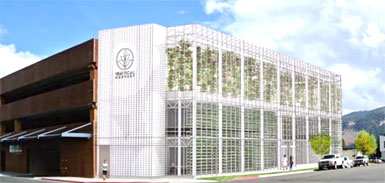
by Rona Fried With years of extreme drought in California and the Midwest bread basket, we’re beginning to see how climate change can have a devastating impact on food supplies and prices. The silver lining is this could lead us to a more sustainable food system, one that relies on locally produced food and that doesn’t depend on transporting it huge distances (which would lower emissions). This isn’t pie in the sky – 80-100% of Americans’ food could be grown within 50-100 miles of our homes, concludes Elliott Campbell, a professor at University of California/Merced, in the study, "The Large Potential of Local Croplands to Meet Food Demand in the United States." Locally produced food isn’t new – we’ve seen an explosion in farmers markets and Community Supported Agriculture (CSAs) in recent years, and the USDA has been fostering local "food hubs," but there’s huge room for growth. 30% of New York City’s population could be fed from farms within 100 miles, as could half the people in the greater Los Angeles area, for example. The percentage goes up as people eat more plants and less meat. Compost collected from cities would fertilize the farms, obviating the need for petroleum-based […]
Read More

One thing everyone agrees on (if you’re not a logging, palm oil, soy or cattle company) is that preserving what’s left of the world’s forests is Job #1 for climate change and biodiversity. Since the mid-2000s, deforestation of the world’s tropical forests dropped about 25%, according to the UN, but new research shows that patched over the long term trend – it accelerated 62% over the past 20 years. And after cheering a 70% decline of deforestation in Brazil’s Amazon, clearing is rising again. Satellite data reveal an alarming rise of 63% in the Amazon in the second half of 2014, after rising 29% in 2013, according to Mongabay. Apparently, Brazil’s economic downturn lowered the value of its currency, making soy and beef more profitable for export, stoking deforestation, explains Mongabay. The government is responding by expanding policing efforts, but what’s really needed are payments and other incentives for farmers and ranchers to maintain and increase forest cover, experts say. And the key Forest Code was loosened in 2012. In some good news, Brazil caught the person responsible for about 20% of deforestation in recent years. Ezequiel Antônio Castanha could face up to 46 years in prison for operating a […]
Read More

Amazingly, Project Vanguard, the first satellite powered by solar, launched in 1958. It’s the longest orbiting man-made satellite and is still orbiting the Earth! Once scientists figured out that solar was the best way to power satellites, manufacturers were able to gain a toe-hold, foreshadowing today’s modern solar industry. Vanguard I is tiny – it weighs about 3 pounds and is 6 inches in diameter. Read our companion article, 1955: Why the US Chose Nuclear Energy Over Solar. —- By John Perlin Few inventions in the history of Bell Labs evoked as much media and public excitement as the silicon solar cell, known at the time as the Bell Solar Battery. The details about this invention Bell disclosed at a press conference the company held in April 1954 greatly boosted interest in solar energy. John Yellott, a mechanical engineer who probably knew more about twentieth century attempts to use the sun’s energy than anyone else in America, hailed the silicon solar cell as "the first really important breakthrough in solar energy technology." In fact, according to a 1955 Newsweek report, many foresaw the solar cell’s development as an eventual competitor to atomic power. Technical Progress Continues in the Lab Technical […]
Read More

Nature’s Path provides an inspiring story of going beyond its own business to care about organic agriculture in general. We need more organic farmland in the US to meet demand and also to preserve and care for land that might otherwise be chemically farmed. This company is buying land and turning it over to adjacent organic farmers to help them bring more land into organic production, while training youth to be our future organic farmers. Nature’s Path has also been leading the fight for GMO labels. This article first appeared in the Organic Trade Association’s newsletter, Organic Report, Summer 2014. by Barbara Haumann A major challenge for US organic trade is that domestic farmland isn’t being converted to organic at a fast enough pace to meet growing demand. North America’s largest independent organic cereal company is leading the way to show how this can change. In May, Nature’s Path announced the purchase of 2760 acres in northern Montana to increase organic farmland, attract and educate new farmers, and meet the growing demand for organic grains and legumes. To make this possible, Nature’s Path is working with local organic farmer Vilicus Farms, which will farm the land and support a one-of-a-kind […]
Read More
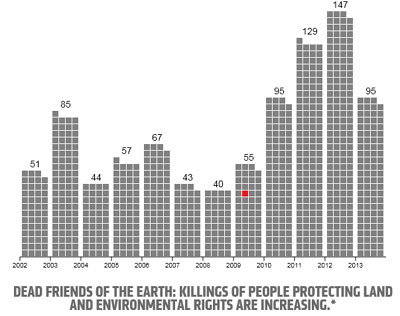
As world leaders negotiate a climate treaty in Peru this week, there’s an associated crisis that doesn’t make it into the news. Peru is the fourth most dangerous country for environmental activists, where at least 57 people have been murdered in the past 12 years. The most recent murder occurred September 1, when four indigenous activists were shot for trying to defend their forests … and thrown into a river. "The murders of Edwin Chota and his colleagues are tragic reminders of a paradox at work in the climate negotiations," says Patrick Alley, co-Founder of Global Witness. "While Peru’s government chairs negotiations on how to solve our climate crisis, it is failing to protect the people on the frontline of environmental protection. Environmental defenders embody the resolve we need to halt global warming. The message is clear, if you want to save the environment, then stop people killing environmental defenders." While Peru is taking some important steps on solar and passed climate legislation in 2012, illegal logging in the Amazon continues mostly unabated. Illegal loggers were charged with the murder of the 4 activists. Two Activists Murdered Each Week But the story is much bigger than that. Over the past […]
Read More
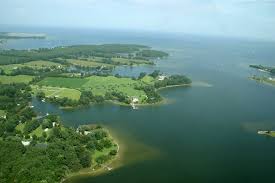
This story illuminates the drama that enfolds when groups try to clean up the environment. In this case, it’s about Chesapeake Bay – the largest estuary in the US – a project that’s spanned decades and is nowhere near done. Once known for its abundant shellfish and fisheries, pollution from agriculture, industry and housing developments has resulted in dead zones where there’s too little oxygen to support life. Since 1983, voluntary measures failed to meet the goal of taking the Bay off the "impaired" list by 2010. Deadline after deadline for improved water quality was missed. Time to try a different tactic. It begins with the Clean Water Act which passed in 1972 with a goal of restoring "fishable, swimmable" waters by 1985 – a deadline that remains unmet to this day. To get EPA to do its job, the Chesapeake Bay Foundation sued in 2009 and 18 months later, they settled. Under a binding agreement, EPA promised to develop science-based pollution limits for the Bay and the rivers and streams that feed into it. It delivered on time and surrounding states responded by creating plans to meet those limits with milestones in 2017 and a hard deadline of 2025. […]
Read More

India’s new Prime Minister, Narendra Modi, has been making the rounds on US talk shows, in addition to having dinner at the White House. Since taking office in May, he’s promised a "saffron" revolution that brings solar lighting to all 400 million people that still live in the dark by 2019. His predecessor missed the mark, but Modi, known as a "doer," is forging ahead on massive commitments to renewable energy. He’s got plenty of experience because as Chief Minister of the Indian state Gujarat, he led the country on solar. At the time, Gujarat had 70% of India’s solar, with 900 megawatts installed in just two years. He formed the first government agency in Asia focused on climate change and wrote the book, Convenient Action: Gujarat’s Response to Challenges of Climate Change. Already huge solar investments and the country’s first offshore wind farm have been announced, and tenders are out for 7 gigawatts (GW) of solar. The military is replacing diesel generators with 1 GW of solar and electrified fences that mark the border will also be solar-powered. Piyush Goyal, India’s Energy Minister, expects $100 billion will be invested in renewable energy in the next five years, going far […]
Read More
Page 1 of 18212345...102030...»Last »









